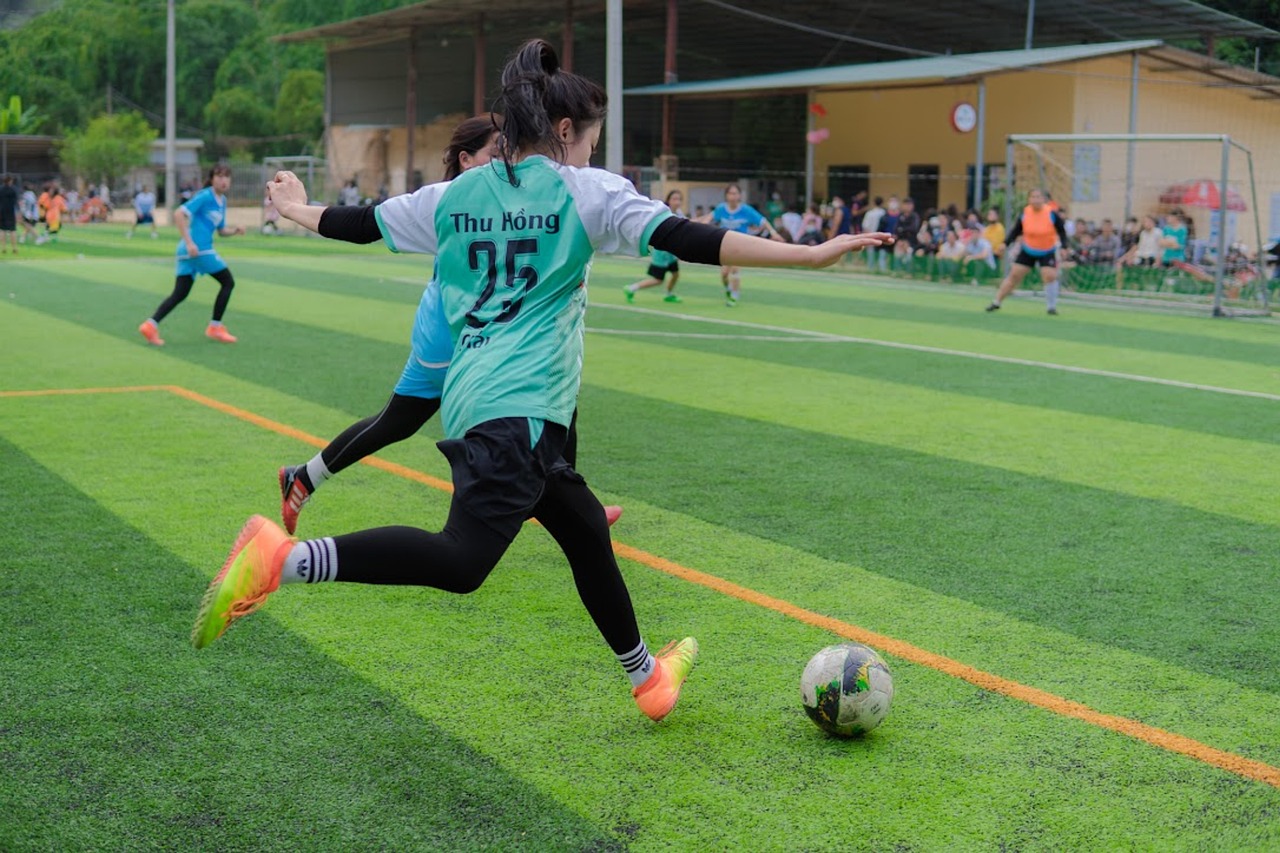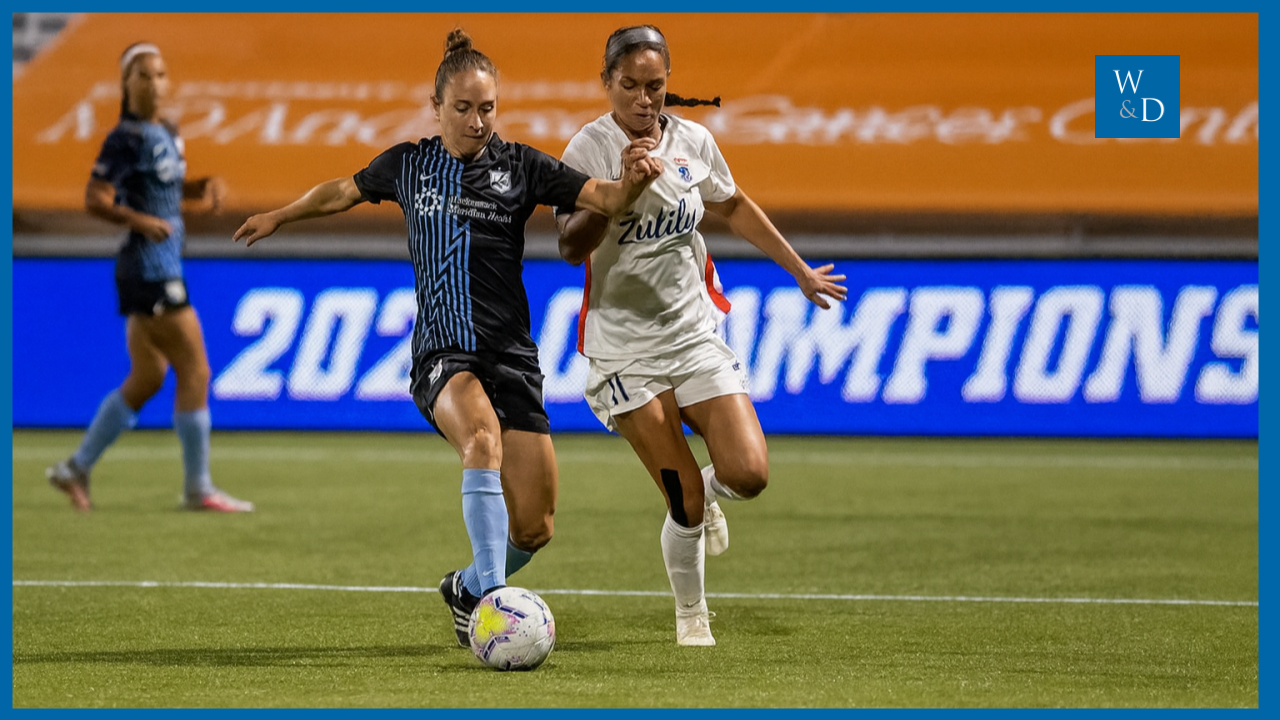Published and translated by the firm Winter – Dávila & Associés
Paris, October 6, 2025
Women’s football is experiencing an unprecedented rise. Once considered marginal within the sports industry, it has now become a major market. Yet this growth, while full of new opportunities, also brings a series of legal and contractual challenges that players, coaches, and clubs must be ready to address.
Rapid Growth — But Still Fragile
According to Deloitte’s latest report (March 2025), global revenues from elite women’s sports are expected to surpass $2.35 billion this year, compared with $1.88 billion in 2024. In just four years, this represents an increase of nearly 240%, driven largely by football and basketball. In England, the Women’s Super League illustrates this dynamic perfectly: clubs generated £65 million in 2023/24, up 34% year over year, with each club surpassing the one-million-pound revenue mark for the first time. Following Euro 2025, these numbers could reach £100 million within two seasons.
Still, the balance remains precarious. A recent FIFA report notes that the average annual gross salary of a professional female football player worldwide is around $10,900, with sharp disparities depending on the country and league. Behind full stadiums and growing media attention, the economic model remains uneven and leaves some players facing significant professional insecurity.
YOU CAN ALSO READ: The professionalisation of women’s football
New Protections Introduced by FIFA
Since June 1, 2024, FIFA has strengthened its Regulations on the Status and Transfer of Players (RSTP), extending to female players—and now also to coaches—a set of rights related to parenthood and health. These include 14 weeks of paid maternity leave, eight weeks of adoption leave, recognition of rights for non-biological mothers, and consideration of severe menstrual disorders. These unprecedented measures mark a historic step toward aligning women’s football with essential social standards.
These developments require an update of employment contracts. Clubs and federations must include clear clauses defining how these leaves are triggered, how salaries are maintained, how return-to-play is organized, and whether substitutes may be registered outside transfer windows. Failing to do so could expose clubs to litigation before both labor courts and sports tribunals.

Photo: pixabay.com
Transfers and Training: The Impact of the FIFA Clearing House
Another significant innovation is the implementation of the FIFA Clearing House, which centralizes and secures the payment of training and solidarity compensation. Previously focused on men’s football, the system now also applies to women’s transfers — over $270,000 was distributed through it in 2024 alone. For training clubs, documenting players’ career paths has become strategically important. For agents, it provides a new leverage point when negotiating bonuses and resale clauses.
Performance Data and GDPR: Increased Vigilance
The rise of women’s football goes hand in hand with an increase in biometric and performance data collection. In France, the CNIL has reminded stakeholders that such data, often related to health, falls under the enhanced GDPR protection regime. Clubs and service providers must therefore ensure compliant data-processing agreements, restrict medical data access to authorized staff only, and guarantee data portability in case of transfers. Meanwhile, UEFA has issued its Concussion Charter, requiring clubs and national teams to immediately remove any player suspected of having a concussion.
What Does This Mean for Players, Coaches, and Clubs?
For players, the key is to protect their careers with better-drafted contracts that integrate new social rights and clarify how personal data may be used. For coaches, the updated RSTP provides new legal safeguards that should be fully leveraged. For clubs, professionalization cannot stop at the pitch: investing in legal and contractual compliance is now essential to convert today’s enthusiasm into a long-term, sustainable model.
YOU CAN ALSO READ: Training compensation in football
Conclusion
The trajectory of women’s football is unmistakable: its sporting, economic, and media value continues to expand. Yet without a robust contractual and regulatory framework, aligned with FIFA’s new standards and European requirements for data and health protection, this growth could face serious legal barriers. More than ever, law is becoming a driver of sustainable development, ensuring that today’s momentum turns into a solid foundation for the future — not just a passing wave.
LEGAL NOTICE: This article has been prepared for informational purposes only. It is not a substitute for legal advice directed to particular circumstances. You should not take or refrain from taking any legal action based on the information contained without first seeking professional, individualized advice based on your own circumstances. The hiring of a lawyer is an important decision that should not be based solely on advertisements.
If you want advice related to the subject of the
article do not hesitate to contact us!
(email: contact@wdassocies.com)










Leave A Comment